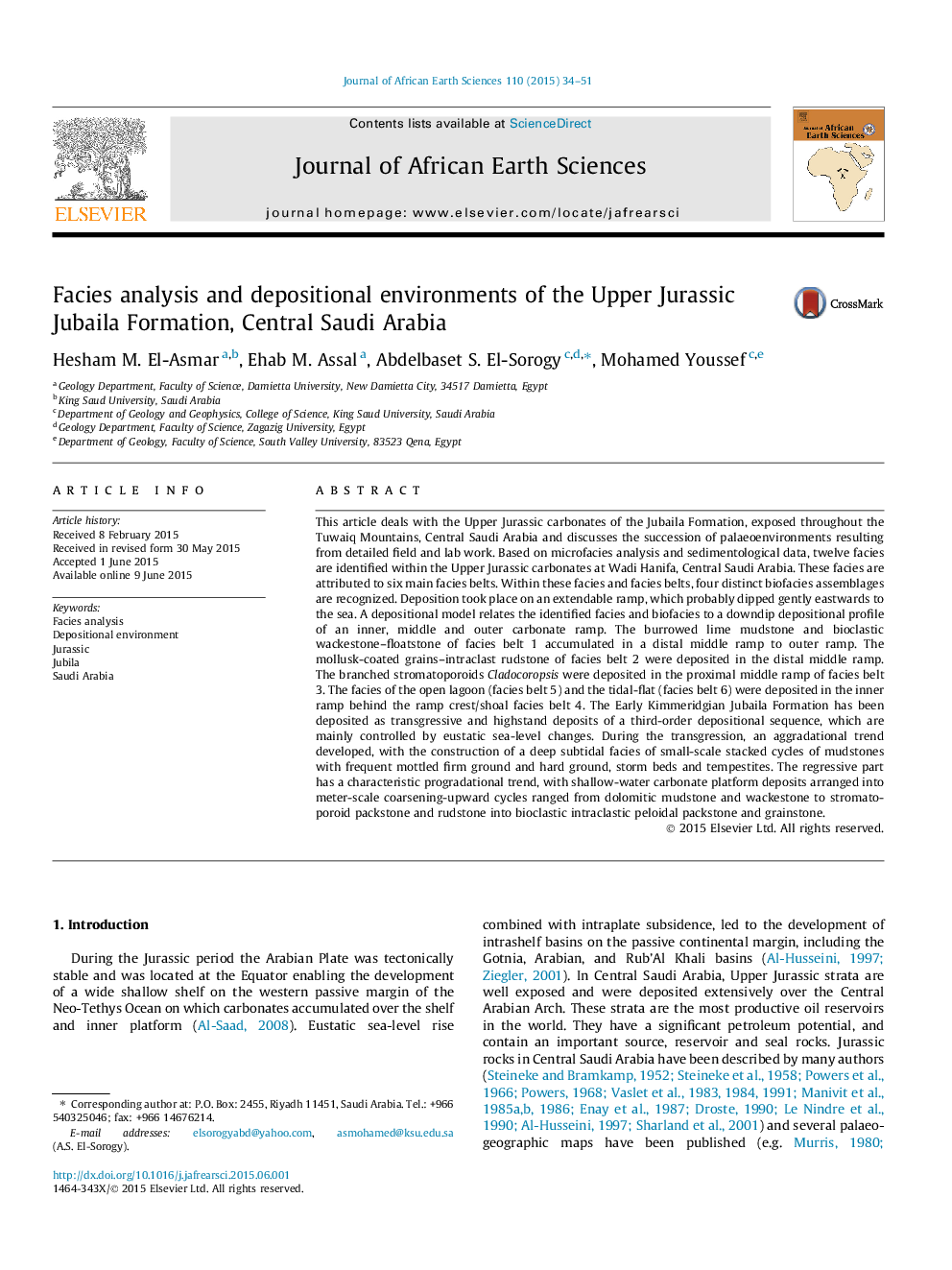| کد مقاله | کد نشریه | سال انتشار | مقاله انگلیسی | نسخه تمام متن |
|---|---|---|---|---|
| 4728586 | 1640197 | 2015 | 18 صفحه PDF | دانلود رایگان |

• The Jubaila Formation is a carbonate ramp model in Central Arabian Arch.
• The Jubaila Formation is deposited in an inner, middle to outer carbonate ramp.
• It is a transgressive–regressive sequence controlled by eustatic sea-level changes.
This article deals with the Upper Jurassic carbonates of the Jubaila Formation, exposed throughout the Tuwaiq Mountains, Central Saudi Arabia and discusses the succession of palaeoenvironments resulting from detailed field and lab work. Based on microfacies analysis and sedimentological data, twelve facies are identified within the Upper Jurassic carbonates at Wadi Hanifa, Central Saudi Arabia. These facies are attributed to six main facies belts. Within these facies and facies belts, four distinct biofacies assemblages are recognized. Deposition took place on an extendable ramp, which probably dipped gently eastwards to the sea. A depositional model relates the identified facies and biofacies to a downdip depositional profile of an inner, middle and outer carbonate ramp. The burrowed lime mudstone and bioclastic wackestone–floatstone of facies belt 1 accumulated in a distal middle ramp to outer ramp. The mollusk-coated grains–intraclast rudstone of facies belt 2 were deposited in the distal middle ramp. The branched stromatoporoids Cladocoropsis were deposited in the proximal middle ramp of facies belt 3. The facies of the open lagoon (facies belt 5) and the tidal-flat (facies belt 6) were deposited in the inner ramp behind the ramp crest/shoal facies belt 4. The Early Kimmeridgian Jubaila Formation has been deposited as transgressive and highstand deposits of a third-order depositional sequence, which are mainly controlled by eustatic sea-level changes. During the transgression, an aggradational trend developed, with the construction of a deep subtidal facies of small-scale stacked cycles of mudstones with frequent mottled firm ground and hard ground, storm beds and tempestites. The regressive part has a characteristic progradational trend, with shallow-water carbonate platform deposits arranged into meter-scale coarsening-upward cycles ranged from dolomitic mudstone and wackestone to stromatoporoid packstone and rudstone into bioclastic intraclastic peloidal packstone and grainstone.
Journal: Journal of African Earth Sciences - Volume 110, October 2015, Pages 34–51